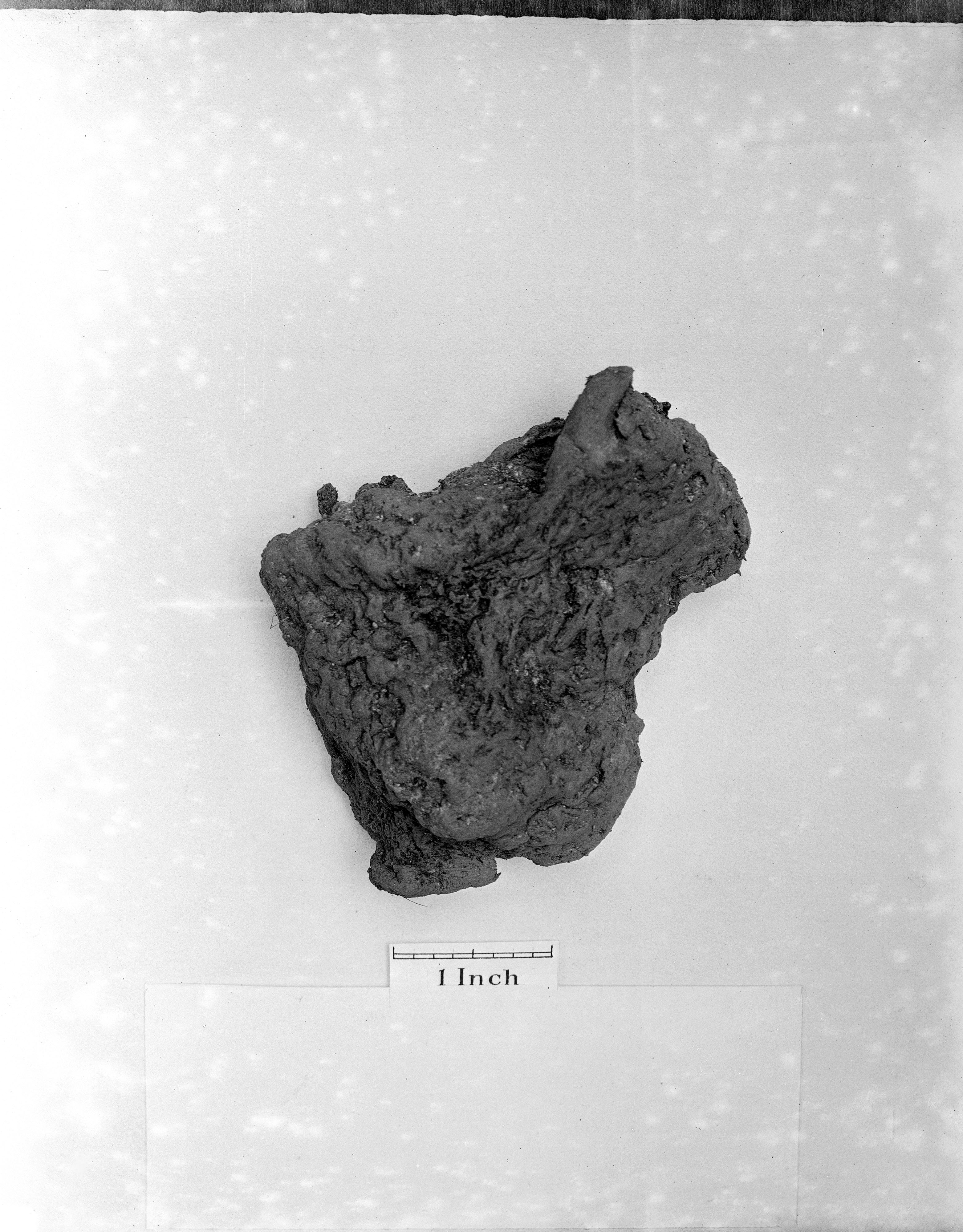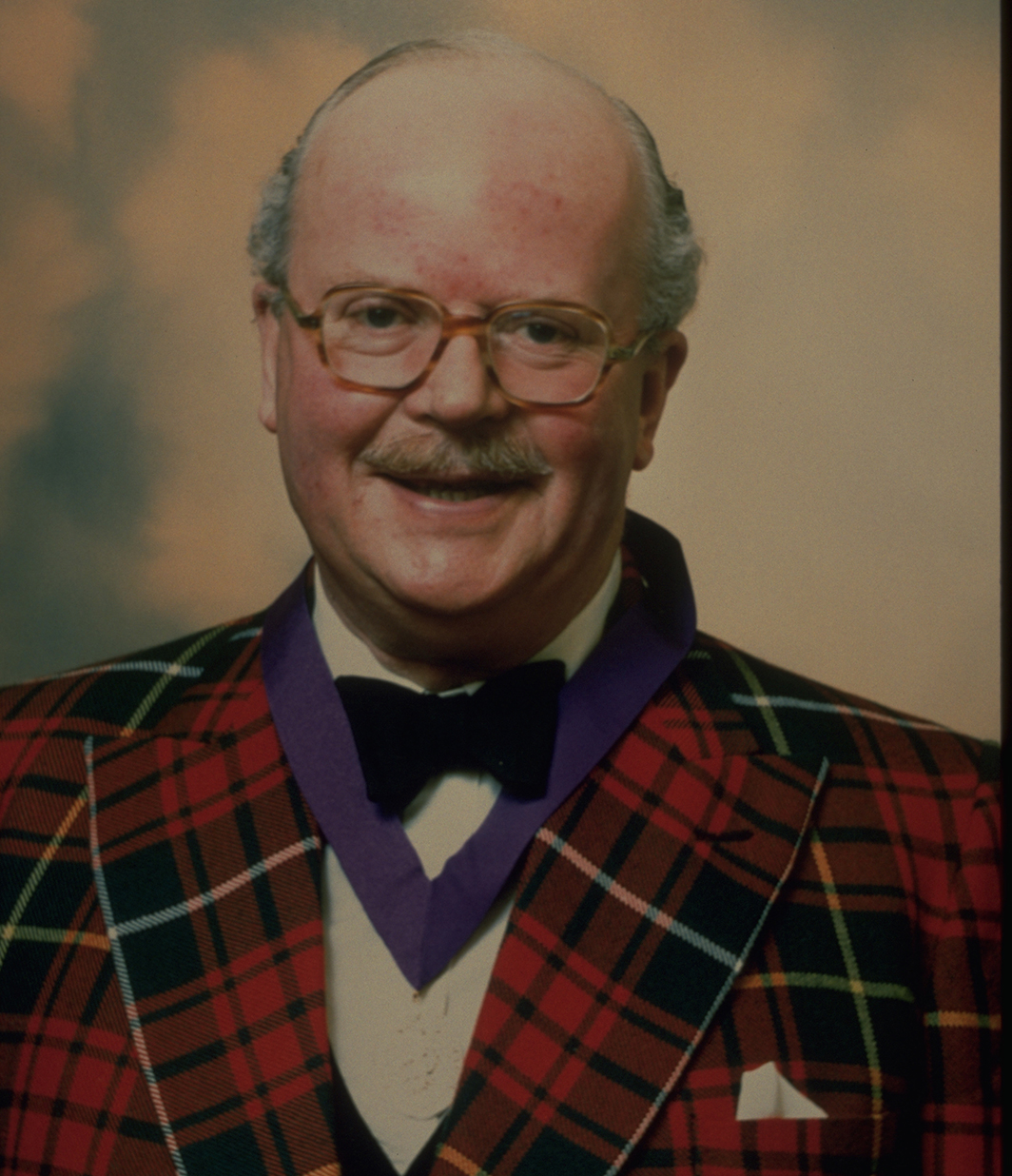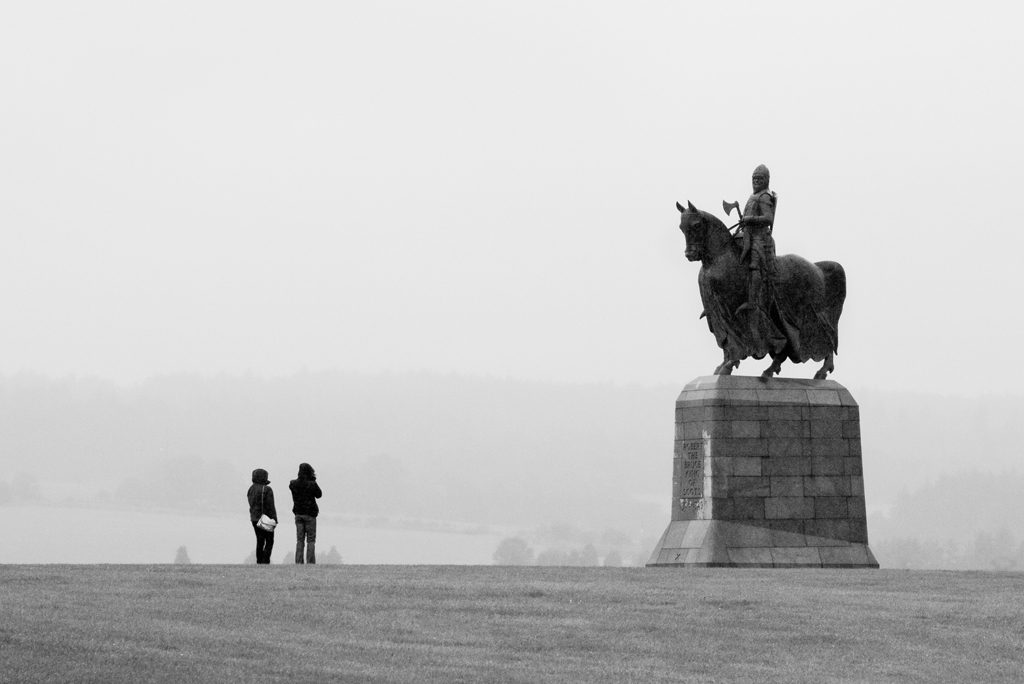Robert the Bruce was one of the most revered warriors of his generation. Often referred to as ‘Good King Robert’, he is best known for his defeat of the English army under Edward II at Bannockburn in 1314.
Bruce has been revered and romanticised for more than 600 years as a symbol of Scottish identity. So, when a casket supposedly containing his heart was discovered at Melrose Abbey during an excavation dig in 1996, it caused a veritable media storm.

The canister in 1996
The canister containing the casket was discovered buried near a wall of the old chapter house. The team didn’t immediately know what the canister contained, but the moment it was unearthed they knew they’d made a significant discovery.
“We knew there were burials at the chapter house, but it’s unclear exactly where this casket was originally buried,” says our Head of Collections Richard Welander.
Having joined the Inspectorate of Ancient Monuments (a precursor to Historic Scotland and Historic Environment Scotland) in 1981 as an archaeological conservator, he was the main authority in handling the casket.
Do You Remember The First Time?
Amazingly, this wasn’t the first time the casket had been dug up by archaeologists.
In fact, it had been discovered in 1921 during a similar excavation, and reburied inside a new lead canister some time later.

The chapterhouse being excavated in the 1920s, from Canmore © HES
The canister was taken to a conservation laboratory in Edinburgh for further investigation. Richard, along with Mandy Clydesdale (formerly of AOC Archaeology), attempted to open the lead canister to reveal the medieval casket inside.
Richard described the process of trying to saw open the canister.
“During the 1921 excavation, the heart was actually removed from the casket and photographed. This damaged to the casket and the base was consequently quite loose.
“When the 1921 canister was opened, it was a matter of guesswork as to which end to open. I was hoping to get the narrow end, but I was just as likely to get the bottom, there was no way to tell. It was a lucky guess that we got the right end!”
What’s In The Box?
Upon opening the canister, they found a plaque commemorating the first discovery in 1921 alongside the original casket.
As the casket was already damaged, they didn’t open it. Instead they used an endoscope to peek through a gap at the base. Inside was a small, prune-like object: the heart that had been reported 60 years earlier.

We don’t have a picture of a prune – this is a piece of masonry from Canmore!
Of course, due to the significance of the find, it wasn’t long before the press got wind of it. The interest, both national and international, was phenomenal. During the investigation process around 30 press photographers and camera crews gathered, all waiting with baited breath to see what would be revealed.
“It was absolute madness.” says Richard. “There was interest from all over the world. I was even quoted in the South China Times!”
Why All The Fuss?
The press attention was something of a precursor to the hubbub that came a few months later when the Stone of Destiny was returned to Scotland, almost 600 years after it was stolen by Edward I in 1296.
The Melrose Casket played heavily into the political climate of the time in a very similar way. With Scottish devolution just around the corner, the symbolism of Robert the Bruce was not lost on the public. Both they and the media seemed to take it for granted this was without a doubt the heart of the legendary King.
Indeed, Donald Dewar, the Secretary of State for Scotland at the time, said the discovery was “one of great significance and symbolism for the people of Scotland. The exciting and dramatic changes we see in Scotland today are, perhaps, a very appropriate extension of those events back in medieval times.”
Historic Scotland, on the other hand, were unwilling to assign an identity to the remains they had unearthed. Indeed, even when the casket was first discovered in 1921, the Ministry of Works had been very obstinate on the fact that it couldn’t be certain that it was Bruce’s heart.
It’s A Heartache
These feelings were echoed by Historic Scotland when the casket was rediscovered in 1996. Unfortunately, there is no definitive method by which we could prove the heart’s true identity either way. For one thing, there are actually three recorded heart burials at Melrose, as the practice was relatively popular during the medieval period.
Though this gives a 1 in 3 chance of finding the right casket, its discovery in the chapter house rather than the high alter doesn’t indicate the status of a king.

Lord Elgin © Charlestown Lime Heritage Trust. Licensor www.scran.ac.uk
Lord Elgin, who claims direct decent from Bruce, offered to provide DNA samples to confirm a match. But even this would not have provided any answers, as the method of preservation used at the time, namely submerging the heart in hot tar (and essentially cooking it in the process), would have destroyed any traces of DNA.
After the casket had been fully examined, several different ideas were put forward about what should happen to it next. There were some suggestions of sending the casket to the National Museum, or creating a new museum for the heart at Melrose Abbey.
Laid to Rest
In the end, in accordance with Scots Law and respect for the dead, the casket was enclosed inside a time capsule, and reburied in a private ceremony. This was the most appropriate thing to do, regardless of whether it truly did belong to Robert the Bruce.
Now, twenty years on, we continue to see parallels in the symbolism assigned to Bruce. Our politics are embroiled with ideas of national identity and independence once more, ideas that were highly topical in 1996, as well as Bruce’s own time.
But at a time when Scotland is still exerting its status as a self-governing entity, many would say it doesn’t matter if the heart is really Robert the Bruce’s or not.
The casket and the heart are symbols of the man himself.

